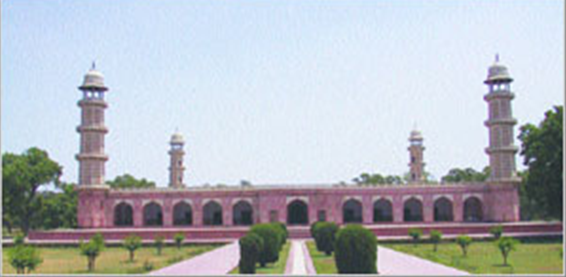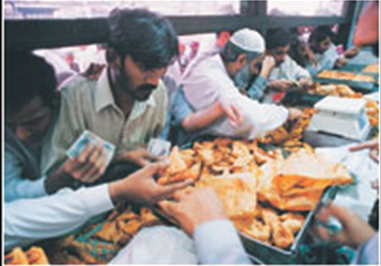Lahore: F-K
This is a collection of articles archived for the excellence of their content. Readers will be able to edit existing articles and post new articles directly |
Jehangir’s Tomb
Jehangir’s Tomb: a reminder of Mughal glory
By Sehar Sheikh
A few days ago, I read the term ‘the Pakistani Mughal’ for the emperor Jehangir in a paper. He was termed as ‘Pakistani’ Mughal because of all the six great Mughals, i.e. Babar, Humayun, Akbar, Jehangir, Shah Jehan and Aurangzeb, only Jehangir is buried in Pakistan. The historical city of Lahore has the privilege of having Jehangir’s mausoleum; the great Mughal Emperor ruled the sub-continent from 1605 to 1627.
It is believed that Jehangir is in fact prince Salim, the most romantic Mughal prince who had fallen in love with Anarkali, a dancing girl in the Mughal court.
Akbar’s son, Emperor Jehangir, is buried in the magnificent Shahdara Mausoleum near the Lahore Fort. It was Jehangir’s last wish to be buried in Dilkusha Garden of his beloved wife Noor Jehan in Lahore. Noor Jehan’s dark and crumbling tomb also lies in the shadow of her husband’s mausoleum, as she had wished for.
Jehangir’s tomb is considered as the most magnificent structure in sub-continent after Taj Mahal and Qutub Minar. It was designed by Empress Noor Jehan in 1627 who also designed her own and her brother Asif Khan’s tombs. After her husband’s death, Noor Jehan had permanently shifted to Lahore and influenced the design and construction of the mausoleum. It took 10 years to build the tomb and 10 lakh rupees were spent on its construction.
The image of Jehangir’s tomb is also printed at the backside of old 1,000-rupee note of Pakistan.
The mausoleum has four minarets and is situated in a garden full of lush green grass and bushes. Each of these four minarets is 30-metre high and the garden is walled. There are two enormous gateways that lead to the square enclosure known as Akbar Serai. On the west of this enclosure is another area that gives full view of the garden in front of the monument. From the centre of the garden, four parterres proceed which are further subdivided into 16 divisions by means of a brick geometric pavement flanking narrow water channels. Originally there were many enchanting fountains in the four narrow canals which have almost ruined now due to negligence by the department of archaeology.
As you enter the passage from the west which leads to the grave, the corridors and inner sanctuary overwhelms you with splendid mosaic on white marbled walls, floors and ceilings. Not an inch is left unembellished with floral mosaic or Quranic verses. The beautifully laid sarcophagus is screened by a panel of five marble jalis (latticed screen, usually with an ornamental pattern constructed through the use of calligraphy and geometry). The gravestone reads, “Illumined grave of His Majesty, Asylum of Pardon: Emperor Nur-ud-din Muhammad Jehangir, 1037 AH”.
The fourth Mughal Emperor, Jehangir, was very fond of gardens, rivers, lakes, flowers and animals. He had a multitude of rare flowers, birds and animals. He mentions about his love and collection of birds and animals in his memoir Tuzk-e-Jehangiri as well. No doubt his mausoleum has lost a big part of its beauty owing to the passage of time yet it’s a beautiful place that reminds us of the grandeur of our great Muslim rulers.


